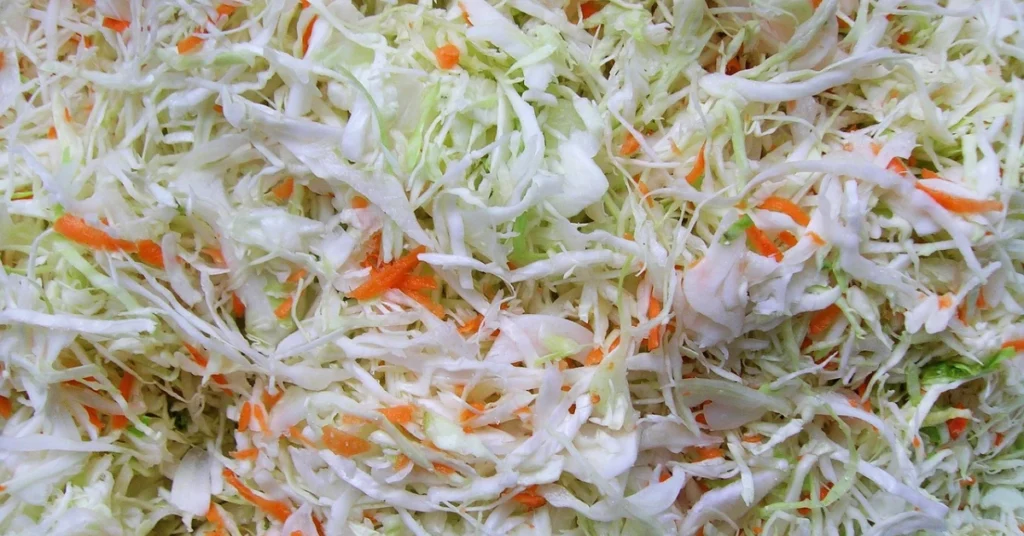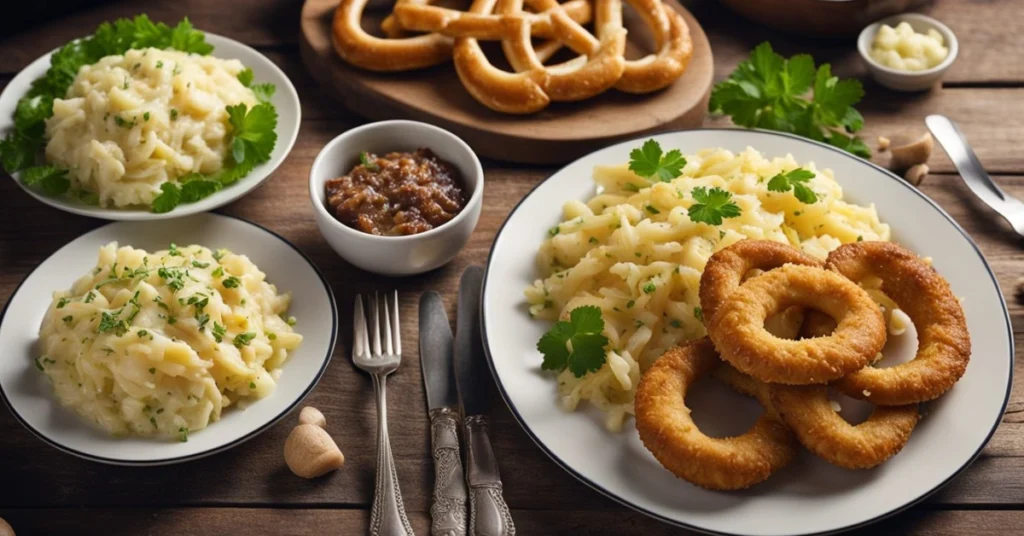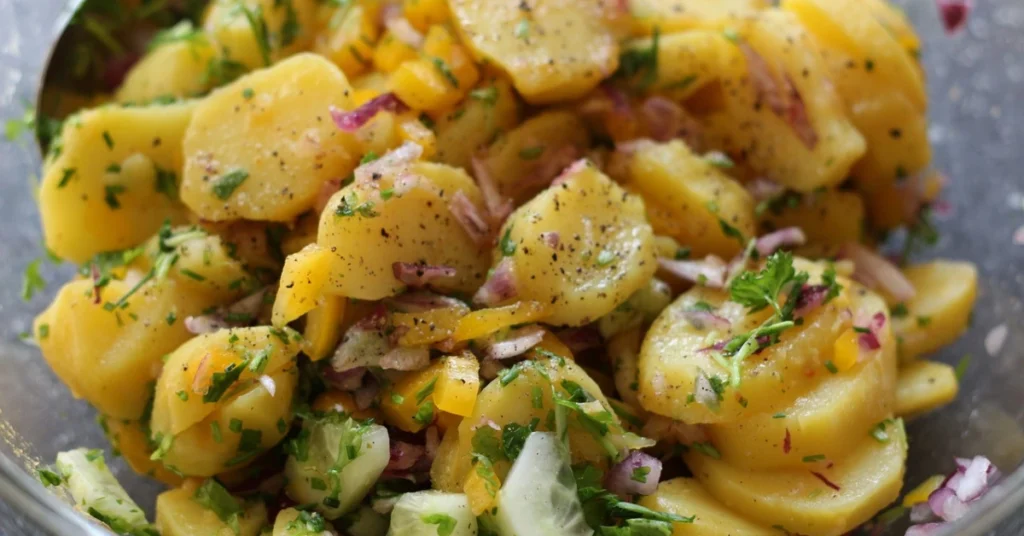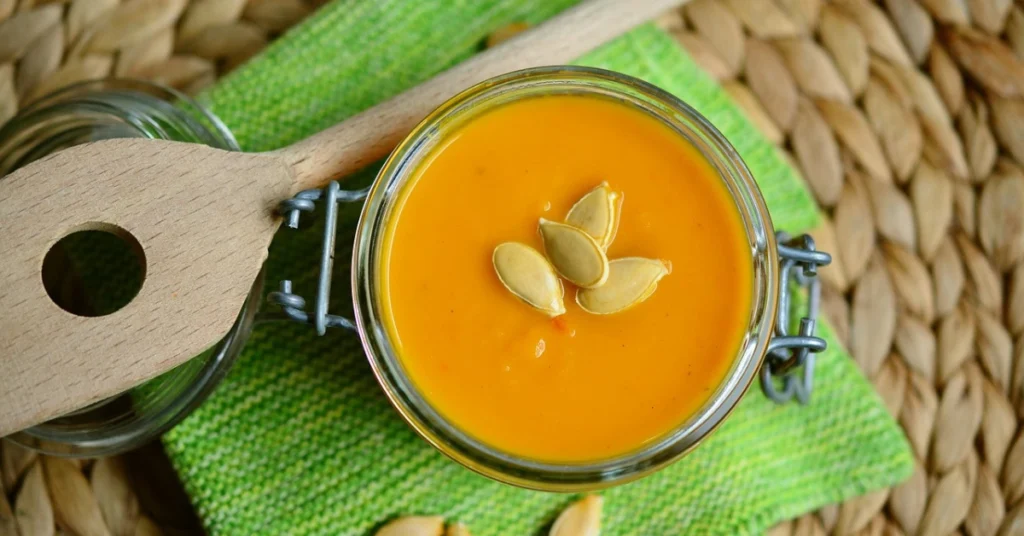Exploring vegan options in German cuisine can truly be a treat for your palate. Germany, with its deeply rooted culinary traditions, is renowned not just for its iconic sausages and schnitzels but for an impressive array of vegan dishes as well. The growing interest in vegan versions of classic German dishes means that you can now relish the rich tastes of Germany while adhering to your dietary preferences.
Gone are the days when the words “German food” brought to mind only meaty specialties. From scrumptious vegan Oktoberfest recipes to nutritious German vegan dishes, the options are endless. As you explore the world of vegan German food, you’ll discover that hearty, flavorful dishes are well within your reach, whether you’re cooking at home or dining out.
So, let’s dive into the wonderful world of vegan German food and see how you can satisfy your cravings for traditional German flavors while maintaining a plant-based diet. With this guide, you’ll be well-equipped to create delectable and satisfying vegan German meals in no time.
Veganism in Germany
Are you excited to learn more about vegan German food? As a curious food lover, you must be looking forward to understanding the historical context and current trends, as well as the cultural shift towards plant-based diets in the German cuisine.
Historical Context and Current Trends
In recent years, Germany has seen an impressive surge in veganism. One poll found that from 2016 to 2020, the number of vegans doubled, reaching 2.6 million people or around 3.2% of the population. This increase in plant-based diets has led to a greater availability of vegan German food in the country.
Some popular veganized traditional dishes include:
- Sauerkraut: a fermented cabbage dish, typically served as a side
- Pretzels: a famous German snack with a twisty shape and a crispy crust, now available in vegan versions
- Potato pancakes: a plant-based alternative to the traditional German potato pancake, made without eggs and often served with applesauce
Cultural Shift Towards Plant-Based Diets
The transformation toward plant-based diets in Germany has been driven by several factors, including increased awareness of the environmental impact of meat production, personal health concerns, and ethical considerations. This shift can be observed in the growing number of vegan-friendly restaurants found throughout the country.
You might also notice that even traditional German vegetarian recipes are being tweaked for vegan palates. For instance, you can find vegan Riesling wine, which is made without animal-derived fining agents, as a perfect beverage to accompany your vegan German food experience.
With all this newfound information, you can now delight in trying or preparing authentic vegan German food at home and explore the fascinating world of plant-based German cuisine!
Vegan Pretzels (Brezn)

When it comes to vegan German food, one of the most iconic options is the vegan pretzel, or Brezn in German. In this section, we’ll explore the cultural significance of traditional pretzels, tips for making vegan versions at home, and share some personal experiences related to this delightful snack.
Traditional Pretzels and Their Cultural Significance
Pretzels have a long history in German cuisine and are deeply rooted in its culture. They are often enjoyed as a snack between meals and are an essential part of festivals like Oktoberfest. Their distinct twist shape is said to represent folded arms in prayer, dating back to their origins in early medieval Europe.
Vegan Adaptations and Tips for Making Them at Home
While many store-bought soft pretzels are “accidentally vegan,” you can also make your own vegan Brezn at home. Some key adaptations you’ll need include the substitution of plant-based milks, like almond or soy milk, in place of cow’s milk, and using an egg replacement or omitting eggs altogether.
To make a gluten-free vegan pretzel, you can use a combination of tapioca starch, corn starch, gluten-free oat flour, and gluten-free brown rice flour. These ingredients come close to mimicking the flavor and texture of regular all-purpose flour.
Here’s a brief list of tips for making vegan pretzels at home:
- Preheat your oven to the right temperature (typically between 400°F – 450°F)
- Allow the dough to rest for the specified time for better texture
- Boil the pretzels briefly in a baking soda solution before baking to achieve their signature chewy exterior
- Experiment with different toppings, such as sea salt, sesame seeds, or even cinnamon-sugar for a sweet twist
Personal Experiences or Anecdotes Related to Vegan Pretzels
One of the best things about being a vegan food enthusiast is discovering delicious, plant-based versions of traditional dishes. Sharing a warm, freshly baked vegan pretzel with friends at an Oktoberfest party or a cozy gathering can create unforgettable memories and experiences.
It’s also a great opportunity to show others that vegan German food can be just as tasty and satisfying as traditional cuisine. So the next time you’re craving an authentic Brezn or looking for a crowd-pleasing vegan snack, give homemade vegan pretzels a try. You and your taste buds won’t be disappointed!
Sauerkraut and Vegan Sausages

Exploring vegan German food can be an exciting culinary adventure, and a perfect example is the classic combination of sauerkraut and vegan sausages. A timeless favorite, this iconic dish is packed with flavor, nutrition, and a taste of Germany’s culinary history.
Overview of Sauerkraut in German Cuisine
Sauerkraut, which literally means “sour cabbage” in German, is a fermented food made from finely shredded cabbage and salt. It has been a staple in German cuisine for centuries thanks to its long shelf life, tangy flavor, and numerous health benefits. Mainly served as a side dish or topping for various recipes, sauerkraut pairs exceptionally well with vegan sausages, providing a perfect balance of taste and texture.
Vegan Sausage Options and Creative Recipes
When it comes to vegan sausages, there are plenty of options available, from store-bought to homemade. Brands like Beyond Meat, Tofurky, and Field Roast offer great-tasting vegan sausage options that are easy to cook and enjoy.
For a creative and mouthwatering vegan German recipe, try preparing a Vegan Sausage with Sauerkraut dish that combines soy milk, olive oil, sauerkraut, and vegan sausages served with Dijon mustard. Another delicious option is a Vegan Sauerkraut and Bratwurst Casserole, which features vegan bratwurst, onions, apples, and plenty of sauerkraut.
Health Benefits of Fermented Foods Like Sauerkraut
In addition to its pleasant tangy flavor, sauerkraut offers a number of health benefits due to the fermentation process it undergoes. Fermented foods like sauerkraut are rich in probiotics, aiding digestion and promoting a healthy gut. They also contain vitamins C and K, as well as minerals like potassium and calcium.
In summary, sauerkraut not only enhances the taste of vegan German food but also delivers valuable nutrients to your diet. Enjoying dishes like vegan sausage with sauerkraut and vegan sauerkraut casseroles allow you to savor a taste of Germany’s culinary traditions while also benefiting from the health advantages of fermented foods.
Vegan Schnitzel

When exploring vegan German food, one dish that stands out is the Vegan Schnitzel. This delicious and cruelty-free alternative to the traditional meat-based schnitzel offers a satisfying and flavorsome meal. In this section, we will delve into the historical background of traditional schnitzel, discover vegan alternatives and recommended ingredients, as well as explore serving suggestions and side dishes to complete your dining experience.
Historical Background of Traditional Schnitzel
The origins of schnitzel can be traced back to the Austro-Hungarian Empire, where its inspiration likely came from the Italian dish Cotoletta alla Milanese. The classic Wiener-schnitzel consists of a thin, breaded, and fried veal cutlet. While schnitzel has been a staple in both Austrian and German cuisine, its popularity has also spread worldwide, with numerous variations using different meats and techniques. Fast forward to the present day, where the rise of veganism has given birth to a delicious and eco-friendly version of this classic: the Vegan Schnitzel.
Vegan Alternatives and Recommended Ingredients
Creating a vegan schnitzel requires substituting meat with plant-based alternatives, without sacrificing taste and texture. Two popular ingredients used for this purpose are seitan and red lentils. Seitan, made from vital wheat gluten, mimics the dense and chewy texture of meat, making it an ideal choice. Red lentils, on the other hand, provide a lighter and more protein-packed option.
To achieve the perfect breading, a combination of flour, breadcrumbs, and an egg replacer such as unsweetened soy milk or a plant-based egg alternative is used. Additional spices and seasonings can be added to enhance the flavor.
Serving Suggestions and Side Dishes
A Vegan Schnitzel can be enjoyed with a variety of side dishes that complement its savory taste. Traditional German sides include:
- Potato salad (Kartoffelsalat): A creamy potato salad made with vegan mayonnaise or a vinegar and oil-based dressing.
- Braised red cabbage (Rotkohl): A tangy and slightly sweet dish made from red cabbage, apple, and sometimes a touch of red wine.
- Cucumber salad (Gurkensalat): Sliced cucumbers tossed in a light vinegar and oil dressing with fresh dill.
- Sauerkraut: The classic fermented cabbage dish that is both tangy and delicious.
- Spätzle: A type of German egg noodle made from flour, eggs, and water, with a vegan version using egg substitutes.
Remember to garnish your Vegan Schnitzel with a lemon wedge and some fresh parsley. Now that you’re equipped with the knowledge and inspiration, it’s time to master the art of vegan German food and create your own delicious Vegan Schnitzel. Enjoy!
Vegan Kartoffelsalat (Potato Salad)

When exploring vegan German food, one of the most popular dishes to try is the Vegan Kartoffelsalat (Potato Salad). In this section, we will delve into traditional German potato salads and vegan variations, seasonal and regional differences, and personal touches you can add to make this dish your own.
Traditional German Potato Salad and Vegan Variations
The traditional German potato salad is a warm dish made with potatoes, bacon, onions, and a vinegar-based dressing. As a vegan alternative, you can use vegan bacon or simply omit it altogether. Additionally, you can replace regular mayonnaise with homemade vegan mayonnaise to create a delicious and cruelty-free dish.
Seasonal and Regional Differences
Germany is known for its regional differences in cuisine, and the Kartoffelsalat is no exception. In Southern Germany, they use a sweet Bavarian mustard and a vinegar-based dressing, while in the North, they prefer a creamier version made with mayonnaise. Seasonal variations may include the addition of seasonal veggies or the use of new potatoes during their harvest time. Such changes can make your vegan potato salad a great year-round dish.
Seasonal Ingredients to Include:
- Spring: Radishes, scallions, and fresh herbs
- Summer: Green beans, cucumbers, and cherry tomatoes
- Autumn: Roasted pumpkin, sauteed mushrooms, and kale
- Winter: Roasted Brussels sprouts, pickled beets, and cabbage
Personalization and Unique Twists to the Vegan Potato Salad Recipe
Adding your personal touch to your vegan potato salad isn’t just encouraged, it’s part of the fun! There are endless possibilities when it comes to creative additions, from extra veggies and herbs to different types of mustard or vinegar. Feel free to customize the dish to your taste preferences or based on what’s available in your local market. Here are a few ideas:
- Texture: Try adding toasted nuts or seeds for a crunchy contrast.
- Flavor Boosters: Mix in capers, olives, or pickled veggies.
- Freshness: Incorporate a variety of fresh herbs like parsley, dill, or chives.
Don’t be afraid to experiment and discover your own signature vegan German potato salad. Remember, the most important aspect is enjoying the process and delighting in the delicious flavors of this classic dish!
Kürbissuppe (Pumpkin Soup)

When it comes to vegan German food, Kürbissuppe (pumpkin soup) is a popular and delicious option. With its rich and creamy taste, it has become a favorite culinary choice during fall. In this section, we will explore the popularity of pumpkin dishes in Germany, provide a vegan pumpkin soup recipe, discuss its nutritional benefits, and offer some presentation tips for an appealing Kürbissuppe.
Popularity of Pumpkin Dishes in Germany
Pumpkin dishes have gained popularity in Germany in recent years. From savoury soups to sweet pies, pumpkins offer versatile culinary options for the German food scene. The Hokkaido pumpkin, in particular, is a well-loved ingredient due to its sweet, nutty flavor and ability to retain its shape after being cooked. In addition to this, the annual Ludwigsburg Pumpkin Festival contributes to the heightened interest in pumpkin-based dishes, drawing crowds eager to sample unique pumpkin creations.
Vegan Pumpkin Soup Recipe and Nutritional Benefits
A simple but scrumptious vegan variation of Kürbissuppe can be made using the following ingredients:
- 1 medium Hokkaido or sugar pumpkin
- 1 small onion, diced
- 1 clove garlic, minced
- 4 cups vegetable broth
- 1/2 cup white wine (preferably Riesling)
- 1 cup coconut milk or almond milk
- Salt, pepper, and nutmeg to taste
To prepare the soup:
- Cut the pumpkin into chunks and remove the seeds.
- In a large pot, sauté the onion and garlic in a little oil until they turn translucent.
- Add the pumpkin chunks, vegetable broth, and white wine.
- Bring the mixture to a boil then lower the heat and simmer for about 20 minutes or until the pumpkin is tender.
- Use an immersion blender to blend the soup until smooth.
- Stir in the non-dairy milk and season with salt, pepper, and a touch of nutmeg.
Not only is this soup delicious, but it’s also full of nutrients such as vitamin A, vitamin C, fiber, and potassium1. Adding pumpkin to your vegan German food repertoire is a tasty way to boost your health.
Presentation Tips for an Appealing Vegan Kürbissuppe
A beautifully presented Kürbissuppe can elevate your vegan German food experience. Here are some tips for plating your soup:
- Use a stylish bowl – A contrasting color or interesting pattern can enhance the soup’s appearance.
- Garnish – Top your soup with a drizzle of coconut milk or a sprinkle of toasted pumpkin seeds and fresh herbs like parsley or chives.
- Serve with crusty bread – Place a slice of rustic, whole-grain bread on the side for an added touch of elegance.
With these presentation tips, you can impress your guests and enjoy a delicious, vegan Kürbissuppe as part of your German culinary adventure.
Our Opinion about Vegan German Food
Nowadays, it is no longer unusual to eat a vegetarian or vegan diet. While some people simply give up meat, others want to avoid all animal products. This is very well accepted in society, as there are many arguments in favor of this diet.
In addition to your own health, this diet can also contribute to environmental protection. Animal welfare is also a major argument in favor of a meat-free diet for many people.
This trend does not even stop at classic German dishes.
Even if they are no longer the traditional recipes, these vegan versions of classic recipes are a valuable addition to any cookbook. Even vegans can enjoy these typical German dishes without having to compromise. And we really like that.
Is sauerkraut vegan?
Yes, sauerkraut is vegan German Food as it is simply fermented cabbage with no animal products.
What are some traditional vegan German dishes?
Popular options include kartoffelsalat (potato salad), pretzels, and spaetzle. Those foods are classical vegan German food.
Can I find vegan options at traditional German restaurants?
Yes, many German restaurants offer vegan versions of classic dishes, such as schnitzel and bratwurst made with plant-based ingredients. It’s more and more common, that the customer asks for these alternatives.
Now it’s your turn. Are you a vegan? Or are you just curious? Have you any experience with these vegan German food alternatives? Let us know in the comments below. We are looking forward to hearing from you.






